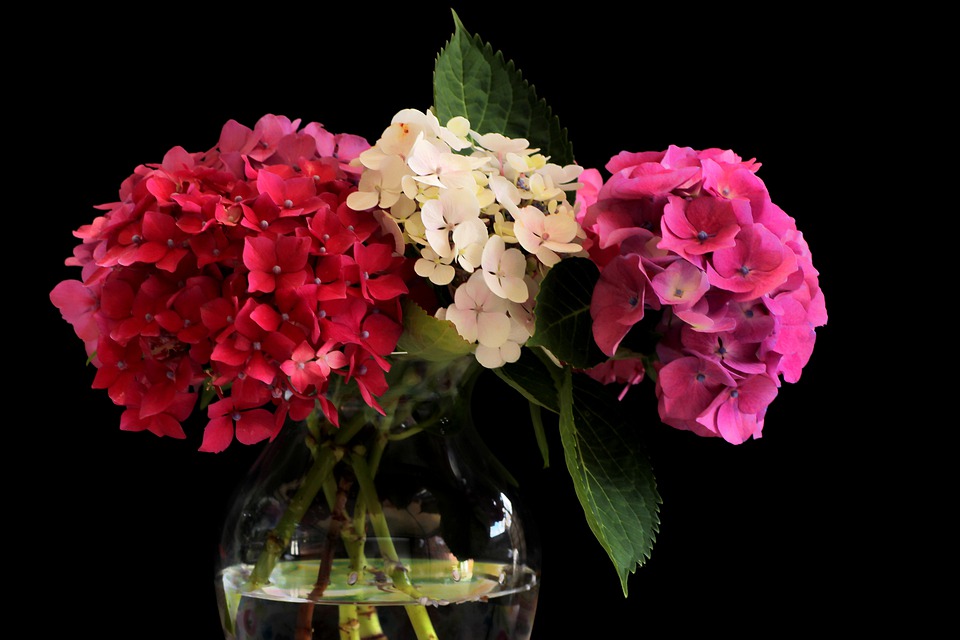We love hydrangeas for their large flowers more than anything else. Since they are considered outdoor plants, you may be surprised when we talk about growing them indoors. However, with good care, growing hydrangeas indoors can be successful, not only for a few months but for years. Here are some tips to help you!
Choose the Right Variety of Hydrangea
Variety is the key to success. This is true of all plants, including hydrangeas. Some varieties do well indoors, and others do not. Hydrangeas, for example, are very suitable for indoor enjoyment. They are commonly called broadleaf hydrangea and bardleaf hydrangea, respectively, and come in many colors.
These varieties can quickly be grown in containers indoors and produce many flowers. They are characterized by large flower clusters among the lush green foliage. They bloom for several months and also stand out beautifully on dining room tables and coffee tables.
Watering Indoor Hydrangeas
A plant pot with drainage holes to drain excess water is necessary for hydrangeas. Proper drainage will prevent root rot and other fungal diseases from damaging the plant. As with most potted plants, watering depends on how dry the soil is and whether or not the hydrangea is in bloom.
The water in the soil should be tested to a depth of about 7.5 cm. If it feels half-dry to the touch, water it thoroughly until the water runs from the bottom. Flowering hydrangeas need water more frequently. If they are thirsty, they will let you know by dropping their flower necks slightly. Once the flowering cycle is over, less water is needed. If possible, use distilled water or rainwater. Tap water contains chlorine and other chemicals that can affect flowering.
How Much Light Does This Plant Need?
It is said that hydrangeas prefer shade. However, this is not entirely true. Even plants that like shade need bright indirect light. Outdoor hydrangeas grow well under trees because they need to avoid direct sunlight. However, the overall ambient light outdoors is always better than in most indoor environments. Growing hydrangeas indoors requires high-quality, bright indirect lighting. Light is best provided by a south-facing window indoors all day or an east-facing window that receives morning sun. Hydrangeas need a lot of light to produce many flowers. However, be aware that direct sunlight at midday can burn the leaves and flowers of hydrangeas, so try to avoid that as much as possible.

Soil and Fertilizer
Hydrangeas grow best in soil that is well ventilated and slightly acidic. The soil’s acidity affects the color of the plant’s flowers: blue flowers at pH 5.5 or lower, purple or pink flowers at pH 5.5-6.5, and red flowers at pH 7 or higher. However, the color of the flowers also varies from variety to variety. Home-grown plants should be fertilized once a week or so during periods of vigorous growth and flowering. Once the flowers die, fertilize only once a month and stop fertilizing entirely in early fall.
How and When to Cut Indoor Hydrangeas
This depends on the variety. For example, some hydrangeas do not need to be specially trimmed to encourage flowering. However, the best time to prune hydrangeas is right after flowering in summer. Do not prune in fall, winter, or spring. Removing the wilted flowers after flowering will always keep the plant looking good. When pruning, cut off any dead or weakened stems. However, you need to keep some of the old wood and stems for the plant to bloom again.
Have you ever tried growing hydrangeas indoors? Share your experience with us and share your tips and tricks in the comments below!






1 Comment
Amazing blog! Do you have any helpful hints for aspiring writers?
I’m planning to start my own website soon but I’m a little lost on everything.
Would you recommend starting with a free platform like WordPress or go for a paid option? There are so many choices out there that
I’m completely confused .. Any suggestions? Many thanks!